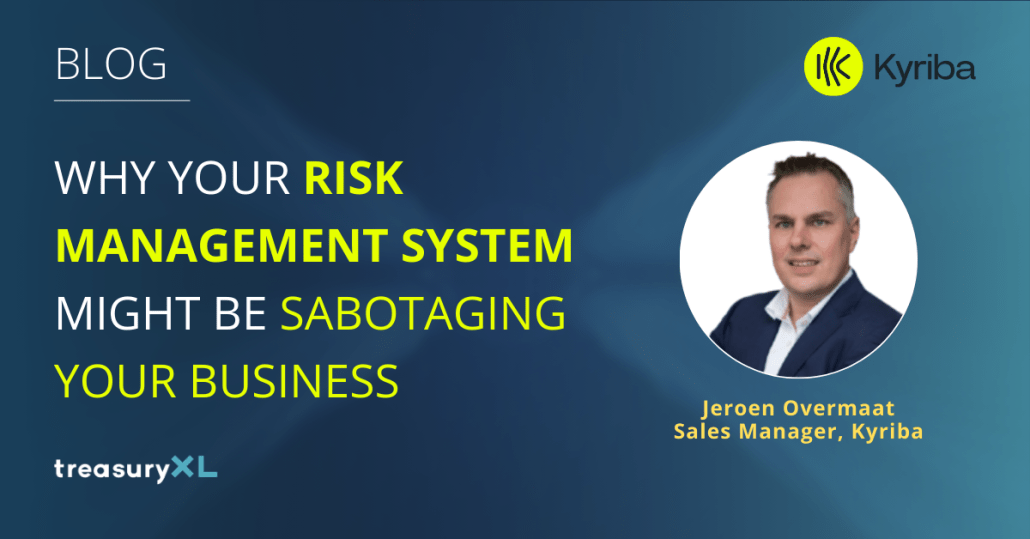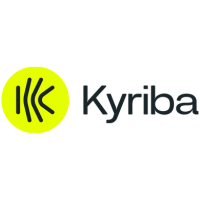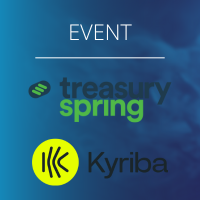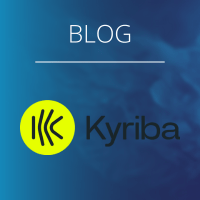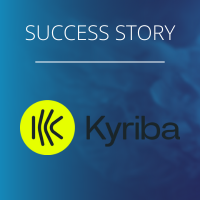Your current risk management platform probably falls into this trap. It tells you about problems after they’ve already cost you money. It creates beautiful dashboards showing yesterday’s volatility. And it generates compliance reports that make auditors happy but don’t actually improve your business outcomes.
The gap between risk tracking and risk management has never been wider. Companies are drowning in data but starving for insight.
The scorekeeper problem
Traditional treasury systems solve only part of the risk equation. They track transactions, value positions, and generate accounting entries. They don’t improve your risk programs.
This creates a dangerous illusion of control. You have visibility into your exposures, so you assume you’re managing risk effectively. But visibility isn’t management. It’s just expensive record-keeping.
Consider the 2008 financial crisis. Firms with basic tracking systems collapsed under pressure. Companies with proper hedging, diversification, and real-time monitoring emerged stronger. The difference wasn’t luck. It was the gap between scorekeeping and strategic risk intelligence.
Risk isn’t an abstract concept. It’s the hidden variable shaping every financial decision your company makes. Some businesses use risk management to adapt and grow stronger. Others ignore it and become cautionary tales.
What real risk management looks like
Effective risk management requires five steps that most systems can’t handle properly.
First, you need to identify existing risks through systematic assessment. This isn’t just brainstorming in quarterly meetings. It’s continuous monitoring across all business units, currencies, and market conditions.
Second, you assess risks by understanding root causes and business impact. Not all risks are equal. A sudden credit downgrade isn’t the same as missing a loan payment. High-priority risks require immediate action.
Third, you prioritize based on severity and urgency. Because it’s impossible to mitigate all risks simultaneously, smart prioritization becomes your competitive advantage.
Fourth, you develop appropriate responses. Avoidance, mitigation, or acceptance. Each strategy requires different tools and different levels of automation.
Fifth, you create preventive mechanisms for ongoing monitoring. Risk management isn’t a project with an end date. It’s an operating system that runs continuously.
Most treasury platforms fail at step three. They can identify and assess risks, but they can’t prioritize intelligently or automate responses effectively.
The daily rate complexity trap
Here’s where things get interesting. Companies operating in daily rate environments face a particular challenge that exposes the limitations of traditional systems.
Daily rate companies need automated daily exposure capture, real-time analytics, and frequent hedge adjustments. Manual processes simply can’t keep pace with market volatility. A company like Ecolab eliminated €40 million in FX volatility by moving from manual monthly processes to automated daily risk management.
Single rate companies have different problems. They rely heavily on forecasting accuracy and periodic true-up adjustments. They need sophisticated scenario modeling and what-if analysis capabilities.
Most treasury teams are stuck managing mixed methodologies across different entities. This creates operational complexity that traditional systems can’t handle elegantly. You end up with multiple point solutions, manual workarounds, and gaps in coverage.
The result? Treasury teams spend their time processing data instead of managing risk.
Beyond tracking to intelligence
The most effective tools combine AI-driven analytics, integrated financial modeling, and automated compliance tracking. However, the key differentiator is platforms that provide complete back-office risk automation rather than just tracking capabilities. Leading solutions offer embedded risk analytics that capture, normalize, and quantify risk across multiple asset classes (FX, interest rates, commodities) while enabling automated hedge execution and accounting entries. Look for platforms that integrate pre-trade exposure analysis with post-trade position management and hedge accounting. They capture, normalize, and quantify risk across all business units simultaneously. They enable actual mitigation instead of just measurement.
This isn’t about having better dashboards. It’s about having systems that improve your risk programs through intelligent automation and decision support.
Companies report quarterly risk reduction savings, automation cost savings and error reduction benefits. More importantly, they achieve earnings predictability and financial stability that supports strategic growth initiatives.
The technology exists to move beyond scorekeeping. The question is whether your organization is ready to make the shift.
Leading tools feature embedded risk analytics, automated hedge accounting, and complete back-office automation.

The leadership challenge
Effective risk management requires active senior leadership involvement. Executives need to understand that risk management isn’t a defensive strategy. It’s a competitive advantage that creates stability, protects investments, and identifies opportunities others miss.
This means supporting teams with sophisticated platforms that provide actionable intelligence, not just data. It means embedding risk considerations into all business activities. And it means fostering a culture where risk awareness drives better decision-making.
The ability to anticipate and control risk separates elite financial professionals from the rest. In finance, the cost of poor risk management isn’t just monetary. It’s reputational.
How to bridge the gap?
Treasury systems typically solve only part of the risk equation. They track transactions, value positions, and generate accounting entries. They don’t improve your risk programs.
What I have learned in the past few months working for Kyriba and talking to prospects and customers and seeing the vendor selection first hand: Kyriba stands apart from other treasury risk management systems by delivering complete back-office risk automation and embedding risk analytics to capture, normalize, and quantify risk. This enables you to mitigate risk exposures and reduce volatility in your financial statements.
The difference lies in the embedded approach. Instead of bolting risk analysis onto existing processes, Kyriba builds intelligence into every transaction. Pre-trade exposure analysis tells you about potential risks before you create them. Automated hedge effectiveness testing runs continuously in the background. Real-time position management adjusts as market conditions change.
This integrated approach handles the complexity that breaks traditional systems. Multi-currency exposures across different rate methodologies. Automated accounting entries that comply with IFRS9 and ASC 815. Comprehensive audit trails that satisfy regulators without creating administrative burden.
The result? Treasury teams that spend their time making strategic decisions instead of wrestling with spreadsheets and manual processes.
What to do next?
Start by asking yourself a simple question: does your current system or way of working actually improve your risk management programs, or does it just track what happened?
If you’re honest about the answer, you probably know what needs to change. The difference between companies that thrive in uncertainty and organizations that struggle, isn’t luck: it’s strategic risk management.
CFOs should prioritize platforms that provide end-to-end integration rather than point solutions. Key evaluation criteria include: pre-trade analytics for exposure forecasting, post-trade automation for position management and accounting, multi-asset support (FX, interest rates, commodities), real-time market data integration, regulatory compliance capabilities, and most critically, embedded risk analytics that actually improve decision-making rather than just generating reports.
Your treasury platform is either your competitive advantage or your biggest blind spot. There’s no middle ground.
Don’t wait and react. Control risk before it controls you.
Stay sharp. Stay skeptical.
Disclaimer Alert
Folks, let’s get a few things straight: this article is my own personal take on the matter, and it’s as personal as your grandma’s secret cookie recipe – unapproved by anyone but yours truly! So, consider this article as my solo journey into the quirky world of tech, where my (sales) creativity dances with analysis. If it makes you chuckle or raises an insightful eyebrow, that’s awesome! If it makes you scratch your head in bewilderment, well, that’s part of the fun too.
But remember, dear readers, this is all in good fun, and it doesn’t constitute official tech doctrine or employer-approved wisdom. It’s just me, my thoughts, and a touch of humor thrown into the tech mix.
Meet Jeroen Overmaat
Jeroen is a seasoned Sales Account Executive at Kyriba Netherlands, where he helps organizations optimize their financial operations through cloud-based treasury, payment, and risk management solutions. With over 30-years of enterprise technology sales experience, Jeroen combines his deep understanding of the Dutch market with his passion for helping businesses transform their financial processes.
Based in Arnhem, where he often finds inspiration cycling along the city’s beautiful nature reserves of the Veluwezoom, Jeroen has built a reputation for developing strong, lasting relationships with key decision-makers across the Netherlands’ enterprise landscape. Although recently started at Kyriba, his customer-centric approach and strategic insights have consistently helped organizations navigate the complexities of digital transformation that so many modern treasury management and financial risk mitigation departments currently face.
As a technology enthusiast with extensive experience in enterprise software, Jeroen is passionate about helping businesses leverage innovative solutions to optimize their liquidity and streamline their financial operations. His collaborative approach and ability to understand unique customer needs have made him a valuable resource for companies looking to modernize their treasury and risk management practices.

Jeroen Overmaat, Sales Manager Kyriba

